Knights, Orders, and Legends: Unraveling Portugal's Chivalric History
Did you know that the Knights Templar are different than other orders in Portugal and the Iberian Peninsula?
Learning about the various military-religious orders that emerged during the Crusades can be confusing, especially when trying to distinguish between groups like the Knights Templar, Knights Hospitaller and many others (yup, there is more, read on). While they shared some similarities, their missions, focus areas, symbols and legacies were vastly different.
Most tourists think there was just one order, but there were many orders, and many of those worked together to help conquer the Iberian Peninsula, protect pilgrims and some had secret missions. Lets explore a bit of the unique histories of these orders, particularly the ones prominent here in Portugal, which became instrumental in creating the land many of us enjoy now as residents and those who travel here.
In my last article, we explored the ingenious rebranding of the Knights Templar into the Order of Christ in Castro Marim*—a transformation that not only safeguarded their property and influence in Portugal but also ensured their survival amid the suppression that doomed their counterparts elsewhere in Europe. In this article, I hope to clarify the confusion caused by the existence of multiple orders and highlight their distinct roles.
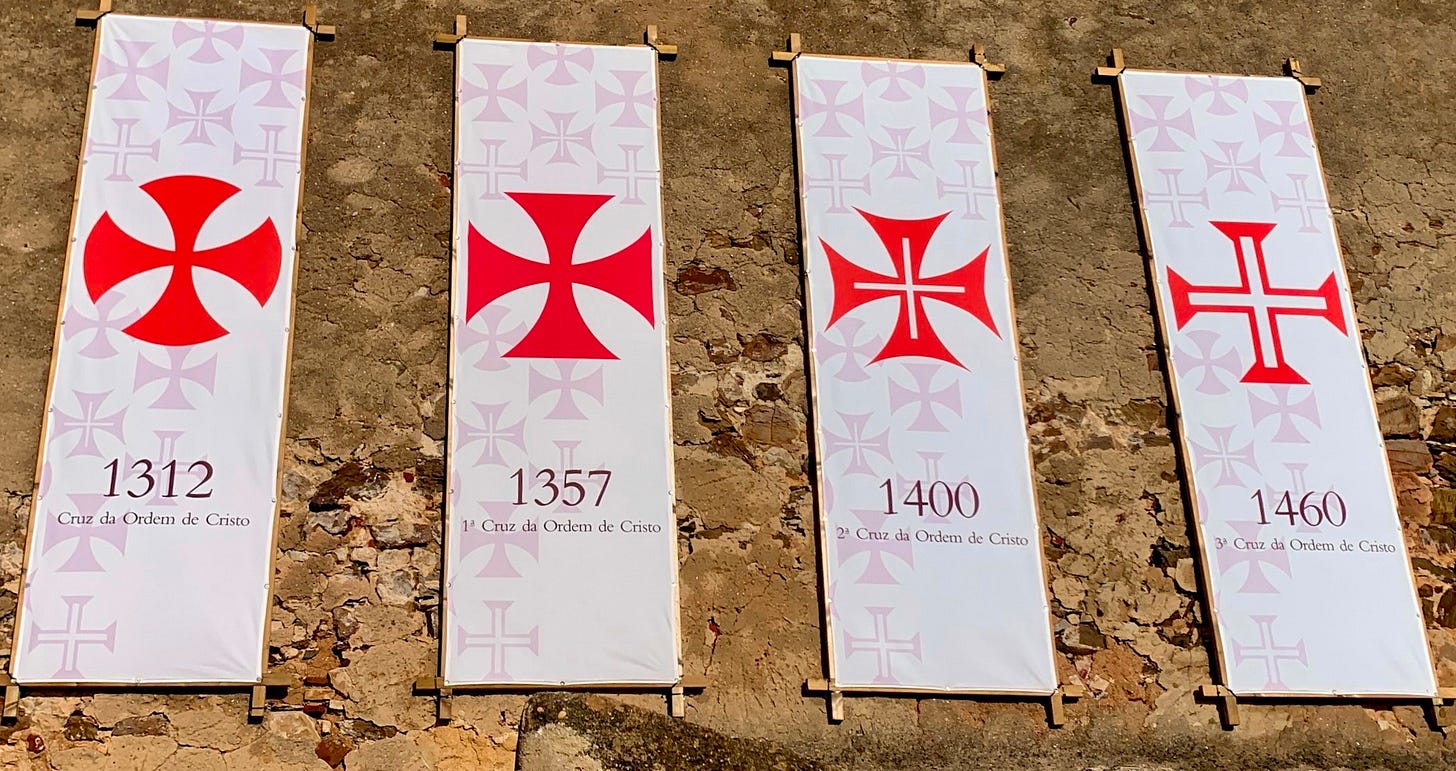
The Knights Templar in Portugal
The Knights Templar, officially the "Poor Fellow-Soldiers of Christ and of the Temple of Solomon," were founded in the early 12th century. Though often described as protectors of Christian pilgrims traveling to the Holy Land, their purpose was much deeper. Unlike other knightly orders operating in the region, the Templars had access to specialized information, secretive missions, and an esoteric understanding of the Crusader states' political and spiritual landscape. This unique role set them apart and solidified their reputation as more than just warrior monks.
In Portugal, the Knights Templar played a vital role during the Reconquista—the centuries-long struggle to reclaim Iberian lands from Moorish control. King Afonso I (Afonso Henriques) granted them lands and privileges in exchange for their military support. They fortified key strongholds, such as the castle at Tomar, which became their headquarters in Portugal and remains a UNESCO World Heritage Site today.
After the Templar Order was disbanded (officially but they just rebranded) in the early 14th century by papal decree, their assets and influence in Portugal were transferred to a new order, the Order of Christ, under King Dinis (reference my article from last week, or read the print version in the January 2025 East Algarve Magazine). This ensured their legacy continued to shape Portugal's expansion as the first modern nation-state and a leader in the Age of Exploration.

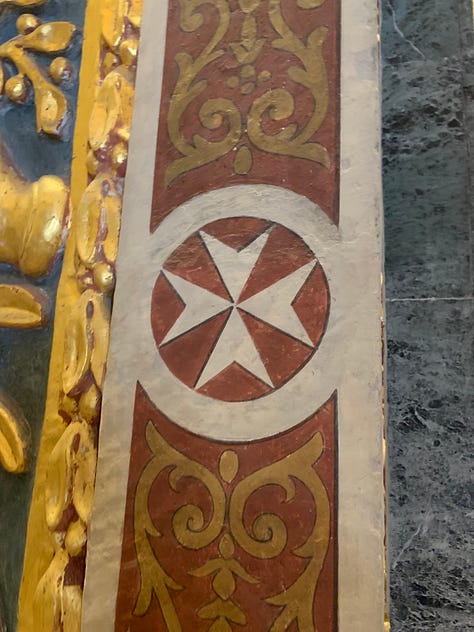

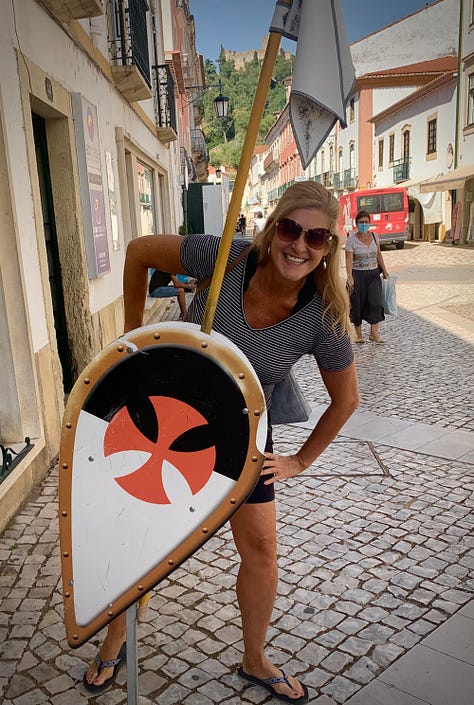

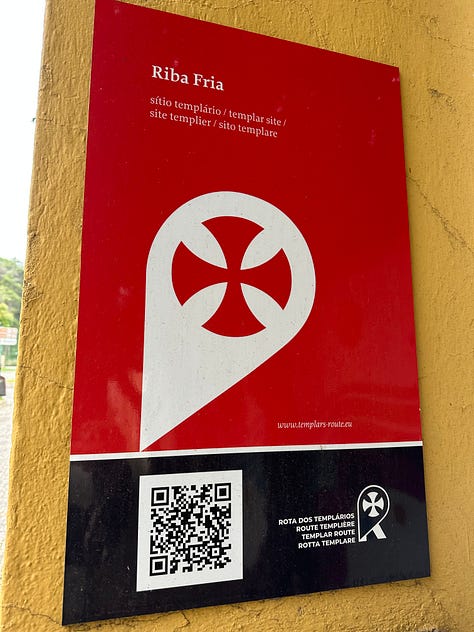
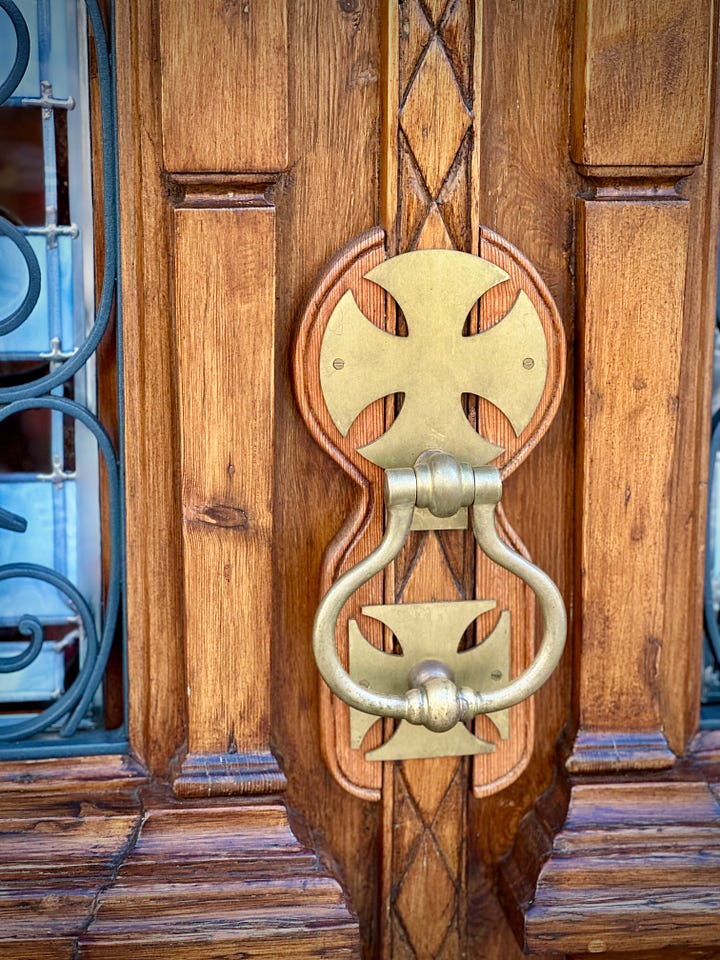
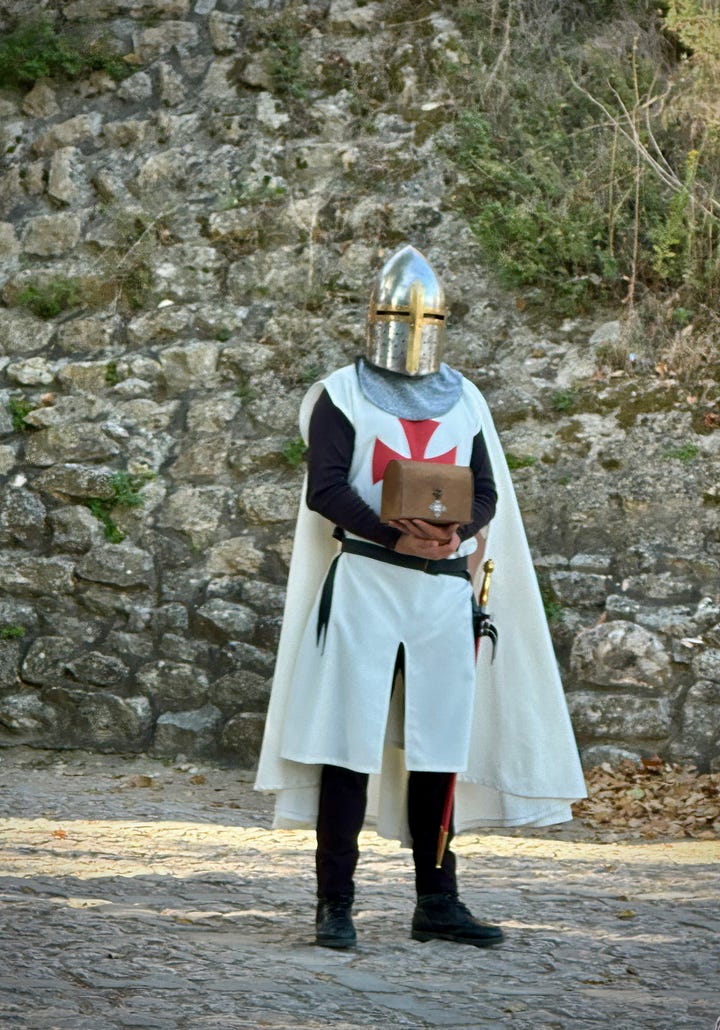
The Knights Hospitaller in Malta
The Knights Hospitaller, officially the "Order of Knights of the Hospital of Saint John of Jerusalem," were also founded in the 12th century and are often confused with the Knights Templar in Portugal. Their original mission was to provide care for sick and injured pilgrims in the Holy Land, but they evolved into a formidable military force, particularly during the Crusades. Unlike the Templars, they were not suppressed with the Templar 1307 order and continue to exist today as the Sovereign Military Order of Malta.
I visited Malta to explore more of the history of the orders (and of course other history and beauty of the islands) and I highly suggest a trip to explore and experience the Knights Hospitaller history around the island, especially at St. John's Cathedral. Their most notable legacy is tied to this Mediterranean island, where they established their base in the 16th century. Known as the "Knights of Malta," they defended the island against Ottoman sieges and became renowned for their naval power. Their focus was more maritime and hospital-based, contrasting with the Templars' land-based military operations.
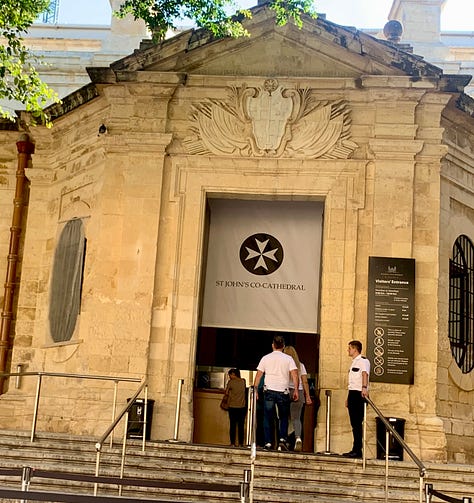
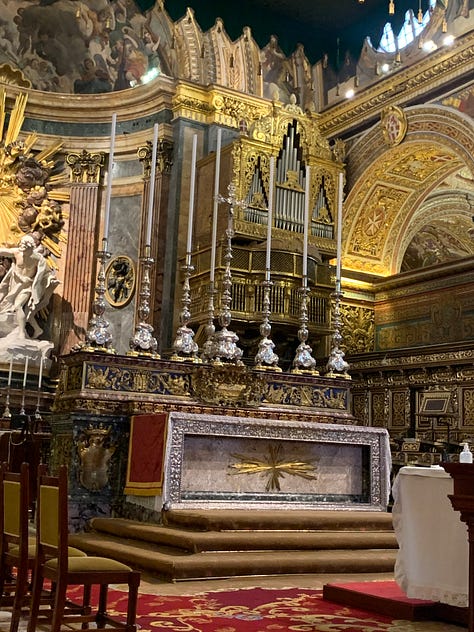
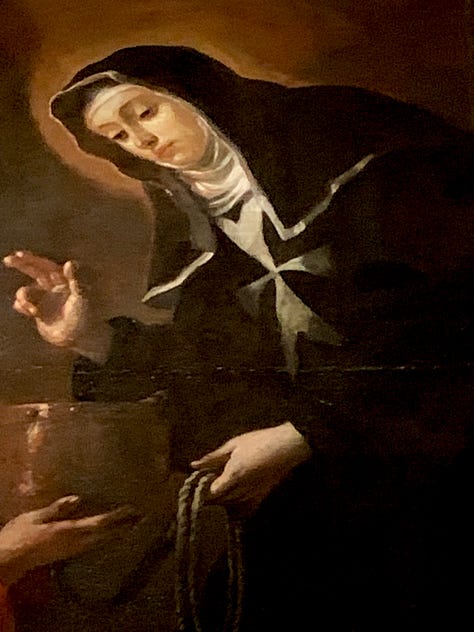

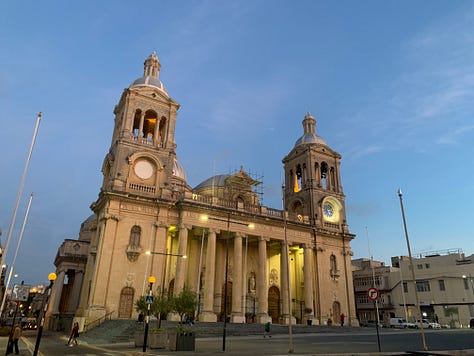

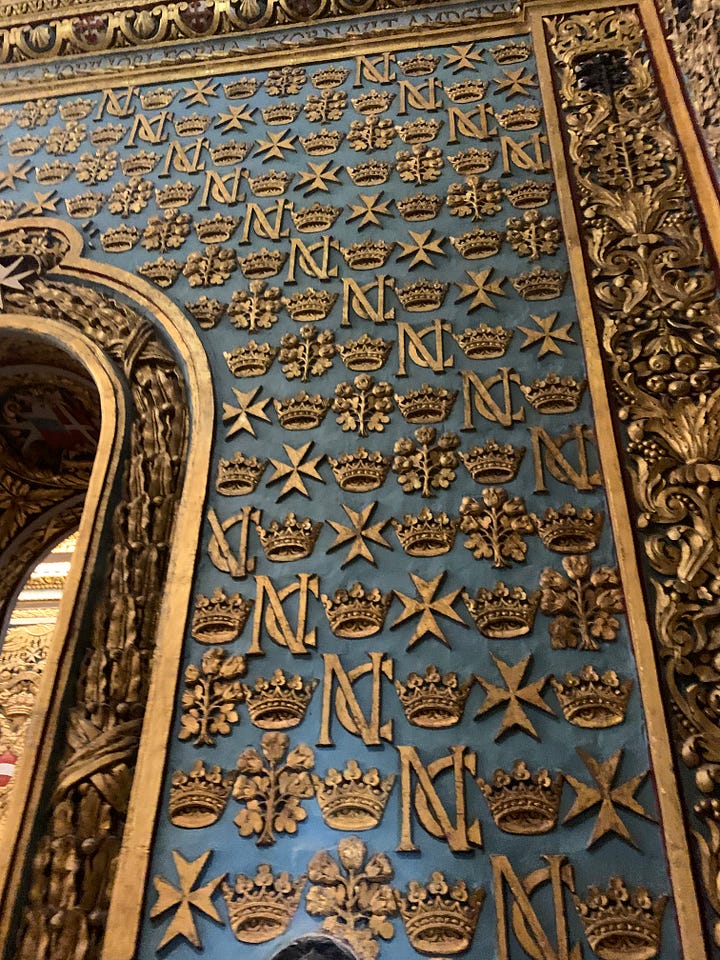
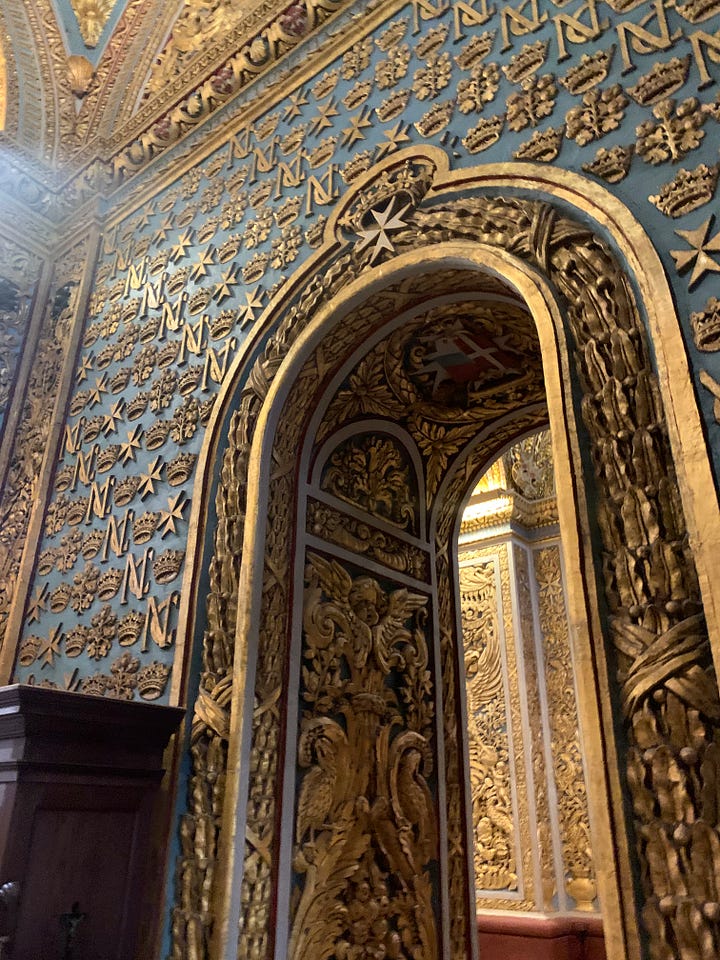
Knights Hospitaller's Protected Routes
Holy Land Roads (1099-1291):
Safeguarded pilgrims between Mediterranean ports (Acre, Jaffa) and Jerusalem
Maintained hospitals along the Via Maris (coastal road) and Jerusalem-Hebron route
Mediterranean Sea Lanes (1309-1522):
Escorted pilgrim ships from Venice/Rhodes to Holy Land ports
Patrolled against Barbary pirates after moving to Malta (1530)
Why the Confusion?
The confusion between these two orders often arises because both were active during the Crusades, wore uniforms featuring crosses (see photos for the differences), and were devoted to protecting Christian interests. However, their geographical focus and missions diverged significantly. While the Knights Hospitaller were most prominent in the Mediterranean, the Knights Templar left an indelible mark on Portugal's history and the formation of its national identity. Most people are unaware that they are not the same group. Now you know. But there is more…





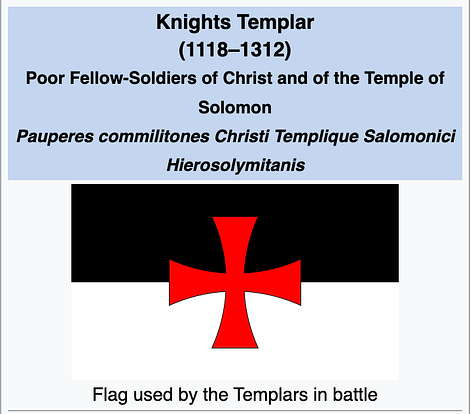


Order of Santiago (two of them) and St. James of the Cross
The Order of Santiago was founded in León, Spain in 1170 to protect pilgrims. Just two years later in 1172, Portugal created its own branch that became independent under King Dinis in 1288. While both used the same red sword-cross symbol, the Portuguese knights focused on conquering the Algarve rather than guarding Spanish pilgrimage routes. Their greatest leader, Paio Peres Correia, captured key towns like Tavira in 1242. And then…
In 1789, Portugal transformed its Order of Santiago knights into the Order of Saint James of the Sword - keeping their famous cross but changing their mission to honor scientists and artists instead of fighting. Meanwhile, Spain's original Order of Santiago continued separately. And lets add another one…Portugal's other major order, the green-crossed Order of Avis, worked with them to secure Portugal's borders long before Spain finished its own Reconquista**.
The Order of Avis in Portugal
Cunfused yet? You may see green crosses around Portugal, these are from the Order of Avis as the Friars of the Order of Avis donned white cloaks with green fleur-de-lis crosses, symbolizing their dedication and unique identity.
The origin of the Order of the Knights of S. Bento de Avis dates back to the Christian Reconquest in the middle of the 12th century. Based in Évora, they were initially known as the Friars of Évora after the city was reclaimed from the Moors. Under the Spanish Order of Calatrava, they were later called the Militia of Évora or the Order of Calatrava. In 1211, D. Afonso II donated the town of Avis to the knights on the condition that they populate the settlement and construct a castle there, marking their independence from Spain and the adoption of the name "Order of Avis."
The first Master of the Order was Fernão de Anes (1196-1219), who led the establishment of the town and its castle. D. João, Master of Avis, later ascended the Portuguese throne in 1385, founding the illustrious Dynasty of Avis. This dynasty ushered in Portugal's strategic Atlantic expansion, culminating in the Age of Discoveries.
Conclusion
The Knights Templar, Knights of Avis, and others like the more well-known Knights Hospitaller were distinctly different orders with different missions, but all left lasting legacies. For residents and travelers, understanding their differences not only clears up historical confusion but also enriches your journey through Portugal's fascinating history. As you explore the castles, convents, and other medieval landmarks, you'll gain a deeper appreciation for the unique role these knights played in shaping the world as we know it today.
*Researcher Freddy Silva has suggested that the Knights Templar were active in Portugal before their official founding in 1119. According to Silva's work, First Templar Nation, they were awarded a castle in Soure, Portugal, as early as 1111. This remarkable claim hints at the possibility that their influence and secretive missions predated the formal establishment of the order.
Quick notes of the Military Orders (and a few more from this time): Missions and Dates of Creation
Knights Templar (1119* but see note above): Templars played a unique role in Portugal's Reconquista** and transformed into the Order of Christ after the 1307 suppression.
Knights Hospitaller (circa 1099): Initially created to care for sick pilgrims in Jerusalem, this order evolved into a major military and naval power, famously defending Malta.
Order of Santiago (1170): Spanish order first then formed a Portuguese branch (1172) and conquered Tavira (1242) and completed the Algarve reconquest.
Order of Avis (1140s): Established during the Reconquista in Portugal, they became known for their green fleur-de-lis cross and ties to the Portuguese monarchy.
Teutonic Knights (1190): A German order focused on missions in Eastern Europe, primarily aiding in the Baltic Crusades.
Order of Calatrava (1158): A Spanish order tasked with defending key territories during the Reconquista in Iberia.
Did You Know?
• Portugal completed its Reconquista** in 1249 (Algarve) - 243 years before Spain took Granada (1492)
• This early completion allowed Portugal to become Europe's first nation-state with stable borders
• The Order of Santiago's Portuguese branch was crucial to securing these borders along the Guadiana River
**The Reconquista or the fall of al-Andalus was a series of military and cultural campaigns that European Christian kingdoms waged against the Muslim kingdoms following the Muslim conquest of the Iberian Peninsula by the Umayyad Caliphate, culminating in the reign of the Catholic Monarchs of Spain.





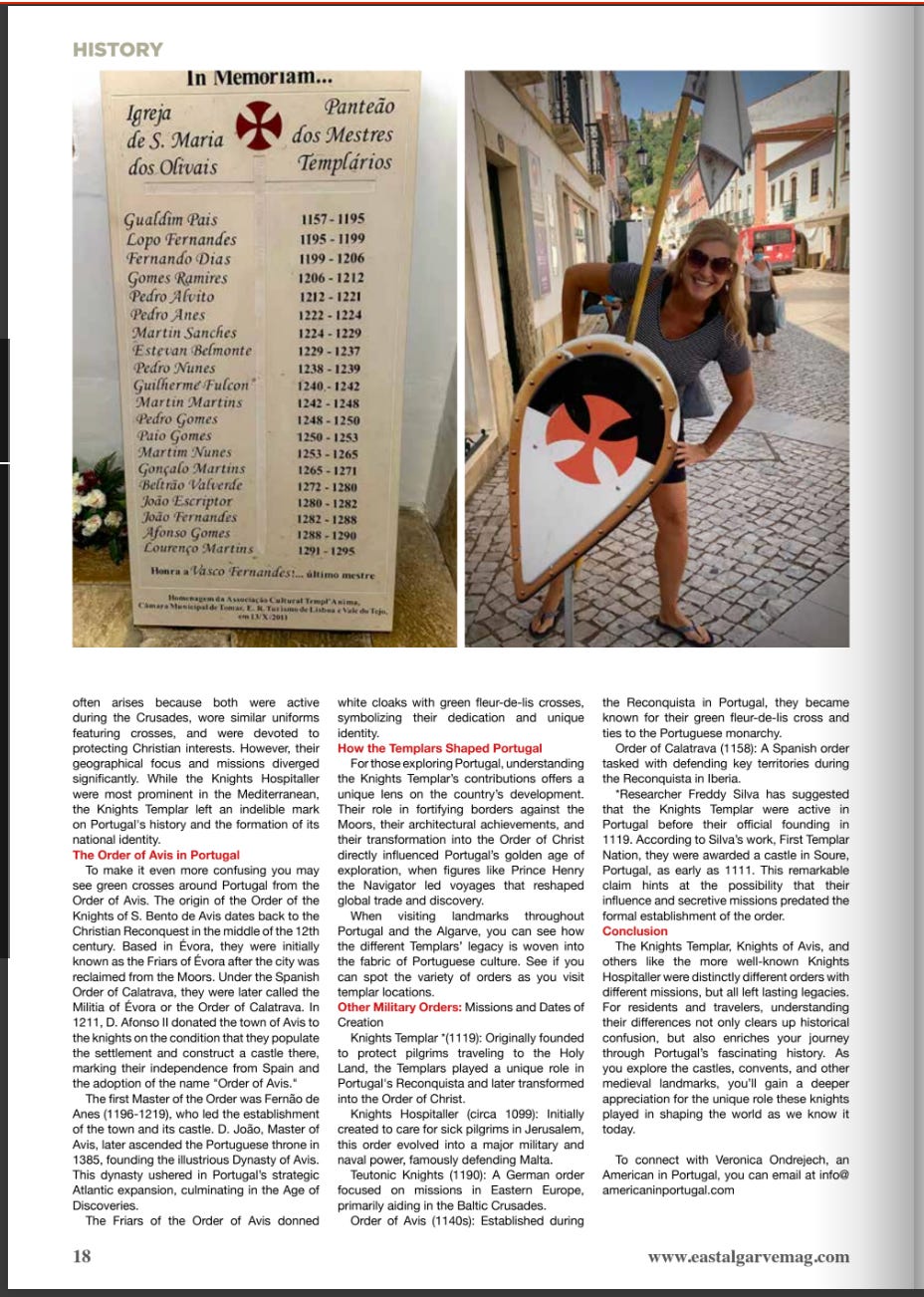
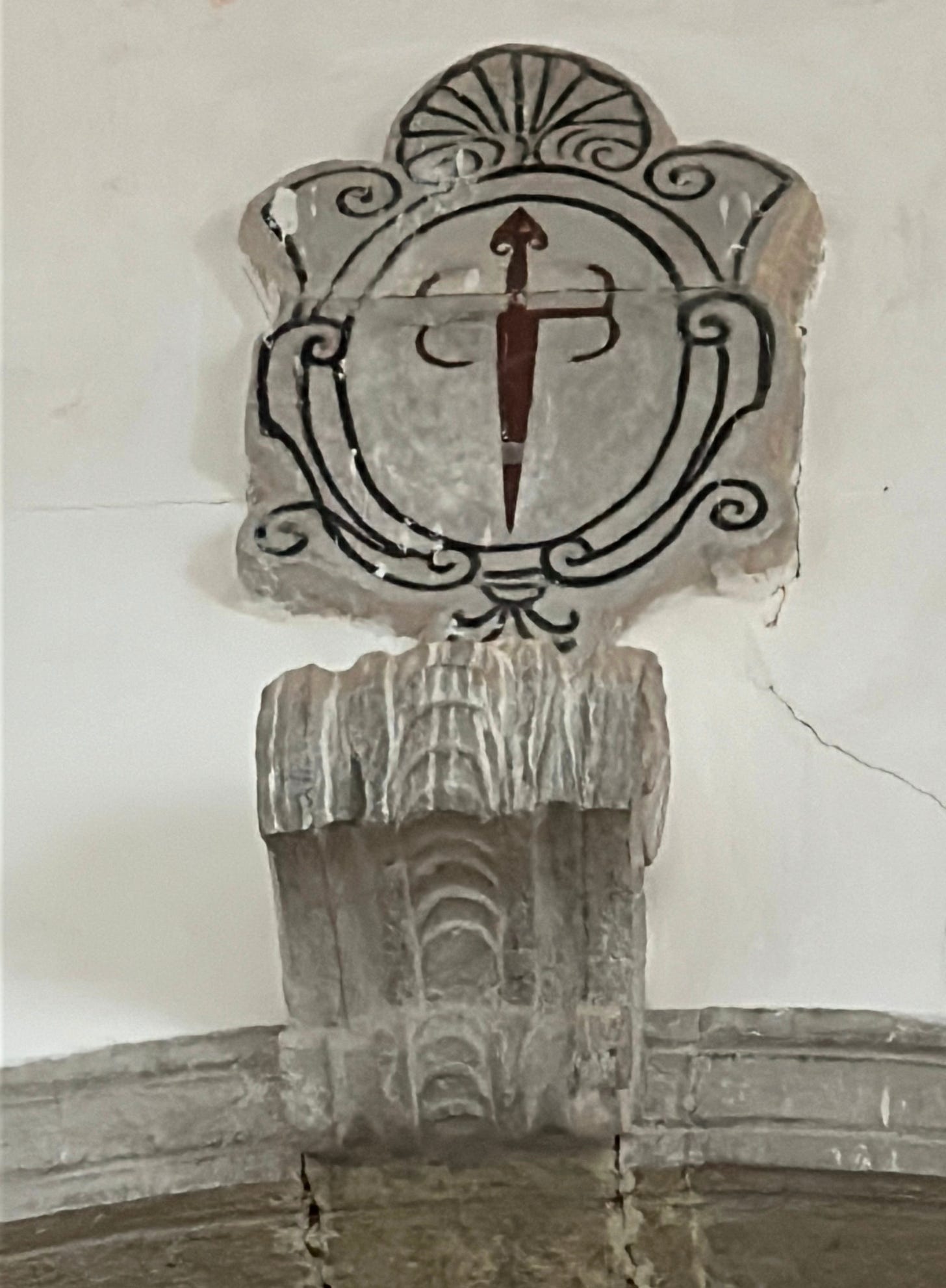

So many interesting details-an excellent sharing of a fascinating history. Thank you!